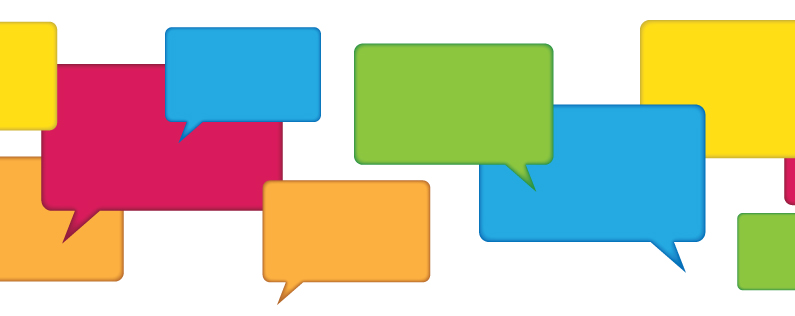
If you are planning a conference, you have hundreds of decisions about venues, logistics, meals, entertainment, speakers, schedules, sponsor packages, attendee fees and so much more. On top of all of that, there is marketing because let’s face it the conference won’t be much fun if no one attends.
Maybe you have already designed your conference flyer and website, sent out a direct mail piece and even a few emails, but don’t stop there. With social media, there’s lots more you can do to build buzz for your conference.
Building your conference social media plan.
Gather your assets
- Create a dedicated landing page or even a micro site for your conference. The page (or site) should include registration information, the agenda, speaker bios, sponsor information and venue details.
- Create standard conference avatars and cover images to be used on social media platforms.
- Set up social media profiles on all major networks, Facebook, LinkedIn, Twitter and G+. Fill out the profiles completely and link to the conference site.
- Build a social media contact file. Ask all of your speakers and sponsors for their LinkedIn and Twitter accounts.
- Collect the slide decks and convert some of the most interesting slides into images to be shared on social media.
- Collect logos from your sponsors and photos of speakers.
- Collect images from the event venue and around the city where the conference is being held.
- Establish a conference hashtag.
- Map out general conference messaging – key points you want people to know about your industry and your conference.
- Kick off your social media activity two or three months before the event. This is especially important if this is a new conference because it will take awhile to break through the clutter and build a following.
- Send a note to all speakers and sponsors with links to all your social media profiles. Encourage them to like, share and retweet your content. Invite them to send additional information for you to use in social media update.
- Create an event page for the conference. Invite speakers, sponsors and potential attendees.
- Schedule event updates every few days. Alternate between conference content, industry information, thanks to sponsors and speakers and information about the city the conference will be in.
- Reach out to the convention bureau of the city hosting the event, they will often help promote your event.
- On Facebook, keep the updates a little more lighthearted. Remember this is Facebook, so focus on some of the personal element along with things to do when they arrive.
- Encourage your conference team to share updates on their timelines.
- For a multi day event, create a public photo album. Do a daily roundup with photos of people. Be sure to tag individuals and encourage conference attendees to share their photos as well.
- Create a strong graphic for your company page.
- Plan 2 – 4 updates a week.
- Keep these updates focused on the more serious elements like agenda topics.
- Share individual slides and link to speaker pages on SlideShare and YouTube.
- Join and be active in industry groups. Participate in conversations and share links to the seminar.
- Ask your speakers what groups they belong to, and send them graphics and content they can share.
- Conduct a short survey to collect information about what people will be interested in at the upcoming event. Use the survey to grow your email list. Consider sponsoring an update. For a few hundred dollars you can reach your target audience with very focused content
- Reach out to your professional network on LinkedIn and enlist their aid to spread the word about the conference.
- Schedule 3-5 updates a day. These can be planned in advance and should include a mixture of links to speakers, thanks to sponsors, trivia about the location and general promotion of the event. Be sure to use the hashtag consistently. These tweets provide the baseline for your social media campaign keeping your timeline full in between live updates. If you have a large conference with multiple presenters and sponsors, you can actually rotate through these several times in the weeks leading up to the event.
- Build a community for your event by following your sponsors, speakers and industry leaders. Interact with these high profile individuals. As you do, their followers are more likely to notice you. As you build your account keep your followers and the people you are following in balance. If you are following 3 or 4 times as many people as follow you, the account will look spammy. Don’t be afraid to grow slowly.
- As the list of people you are following grows, create sub lists so you can focus in on specific groups.
- Increase your interaction as the event date approaches.
- If your hashtag is getting lots of interaction during the event, project the Twitter feed on a wall during breaks. Social media is about ego, when people see their tweets featured, they are more likely to comment again.
- Pre-schedule the timeline with updates about each speaker. Create jpegs of individual slides and share these before or during their presentation. The content is likely to be shared by conference participants along with their thoughts during the presentation.
- Assign someone to monitor the hashtag during the event to interact with participants and answer questions in real time.
When the event is over your work is not done.
Take time to capture the best of the social media content to use as part of the promotion for your next event. Need help planning or executing your conference social media plan? Give us a call.
